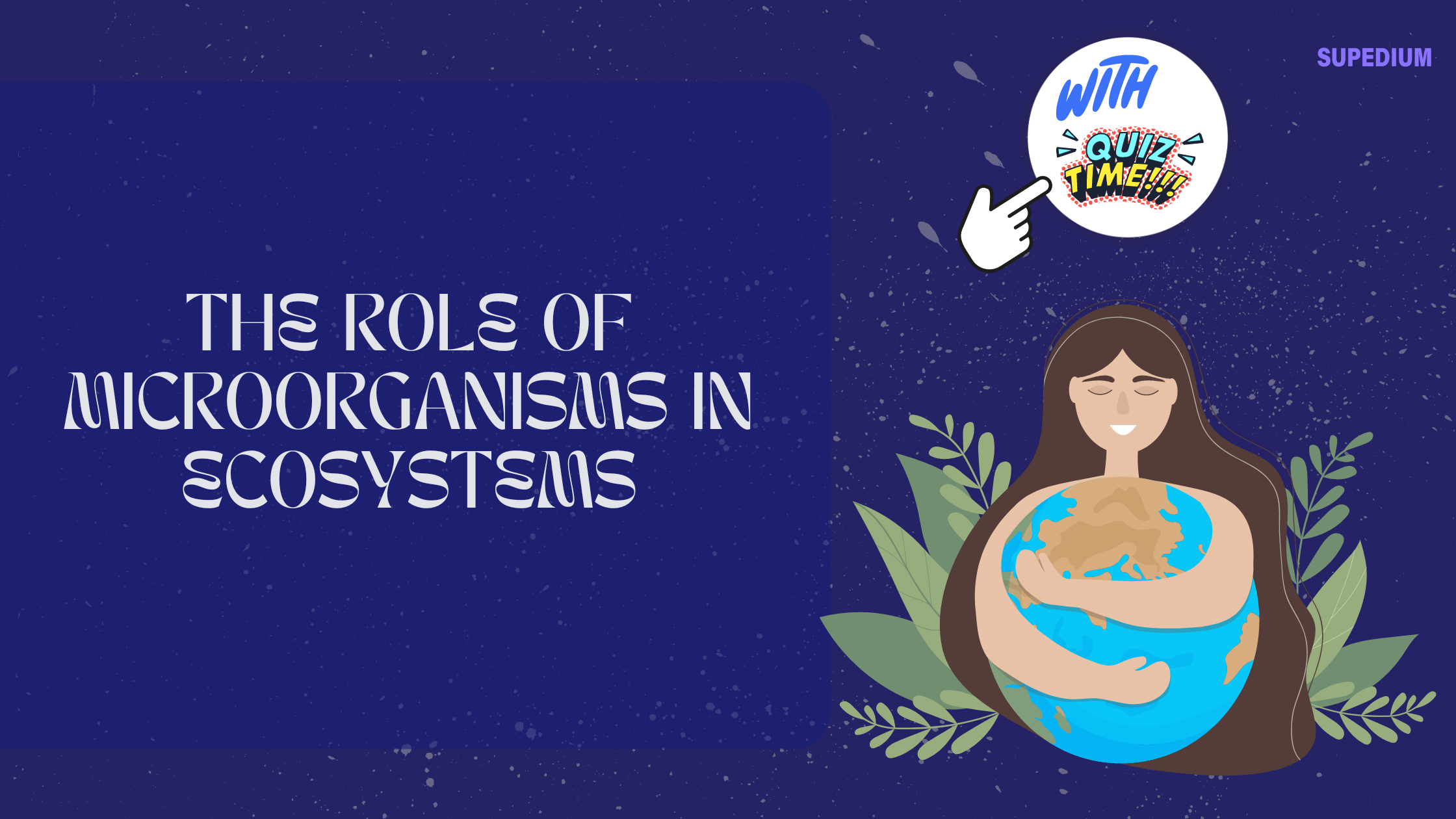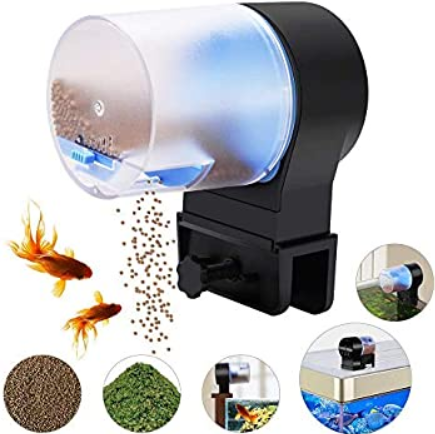Table of Contents
![]()
Introduction
Microorganisms, including bacteria, archaea, fungi, protists, and viruses, are often invisible to the naked eye but play pivotal roles in ecosystems. Despite their small size, their impact on the environment is profound and multifaceted. From nutrient cycling to symbiotic relationships and ecosystem health, microorganisms are integral to maintaining ecological balance. This article explores the diverse roles of microorganisms in ecosystems, highlighting their contributions to nutrient cycling, symbiotic relationships, ecosystem health, and more.
Microorganisms and Nutrient Cycling
Decomposition
One of the fundamental roles of microorganisms is decomposition. Microbes, particularly bacteria and fungi, break down organic matter from dead plants, animals, and other organisms. This decomposition process releases nutrients such as nitrogen, phosphorus, and carbon back into the environment, making them available for uptake by plants. Without these decomposers, ecosystems would accumulate vast amounts of organic waste, and nutrient recycling would be impeded.
Nitrogen Cycle
Microorganisms are essential to the nitrogen cycle, a critical process for ecosystem health. Nitrogen fixation, carried out by bacteria such as Rhizobium and Azotobacter, converts atmospheric nitrogen into ammonia, which can be used by plants. Nitrifying bacteria then convert ammonia into nitrites and nitrates, forms of nitrogen that plants can absorb. Denitrifying bacteria, such as those in the genus Pseudomonas, convert nitrates back into nitrogen gas, completing the cycle. This process maintains soil fertility and supports plant growth.
Carbon Cycle
In the carbon cycle, microorganisms decompose organic matter, releasing carbon dioxide into the atmosphere. Methanogens, a group of archaea, produce methane as a byproduct of anaerobic decomposition, contributing to the greenhouse effect. The balance of carbon release and sequestration by microorganisms influences global climate patterns, highlighting their role in both ecosystem functioning and climate change.
Phosphorus Cycle
The phosphorus cycle involves the mobilization of phosphorus from minerals into a form accessible to organisms. Microorganisms, particularly fungi, are crucial for phosphorus uptake. Mycorrhizal fungi form symbiotic relationships with plant roots, enhancing phosphorus absorption from the soil. This interaction supports plant growth and contributes to the overall nutrient dynamics of ecosystems.
Microorganisms in Symbiotic Relationships
Mutualism
Microorganisms engage in various mutualistic relationships that benefit both parties involved. Mycorrhizae, for instance, are fungal partnerships with plant roots. The fungi enhance water and nutrient absorption for the plants, while the plants provide organic compounds to the fungi. Lichens represent another mutualistic relationship between fungi and algae or cyanobacteria. In this symbiosis, the fungus provides a protective environment for the photosynthetic partner, which in turn supplies nutrients through photosynthesis. Gut microbiota, comprising bacteria, fungi, and archaea, aid in digesting complex carbohydrates and synthesizing essential vitamins for animals, showcasing another vital mutualistic interaction.
Commensalism
In commensal relationships, one organism benefits without significantly affecting the other. For example, bacteria living on human skin and mucous membranes help protect against pathogenic microorganisms while benefiting from a stable habitat. Similarly, microorganisms in the rhizosphere (the region of soil near plant roots) often gain nutrients from the plant’s exudates without harming the plant.
Parasitism
Some microorganisms are parasitic, meaning they benefit at the expense of their hosts. Pathogenic bacteria and viruses can cause diseases in plants, animals, and humans. These pathogens can disrupt ecosystem balance by affecting population dynamics and altering community structures. Understanding the role of pathogenic microorganisms helps in managing diseases and maintaining ecosystem health.
Microorganisms and Ecosystem Health
Soil Health
Microorganisms are vital to soil health, affecting soil structure, fertility, and disease suppression. Soil bacteria and fungi contribute to soil aggregation, enhancing its structure and water-holding capacity. These microbes also play a role in suppressing soil-borne diseases through microbial antagonism, where beneficial microorganisms outcompete or inhibit pathogens.
Water Quality
In aquatic ecosystems, microorganisms play a crucial role in bioremediation, the process of breaking down pollutants such as oil spills and heavy metals. Certain bacteria can degrade organic pollutants, reducing their environmental impact. However, pollutants can also affect microbial communities, potentially disrupting aquatic ecosystem functions and leading to issues such as eutrophication.
Air Quality
Microorganisms contribute to air quality by participating in the breakdown of atmospheric pollutants. For example, bacteria in soil and water can decompose volatile organic compounds (VOCs), and some microorganisms play a role in the formation and degradation of greenhouse gases. The interplay between microbial processes and air quality has implications for climate change and atmospheric chemistry.
Microbial Diversity and Ecosystem Stability
Biodiversity of Microbial Communities
Microbial diversity is crucial for ecosystem resilience. Diverse microbial communities can adapt to environmental changes and maintain ecosystem functions. Loss of microbial diversity can lead to reduced ecosystem stability and functionality. Understanding microbial biodiversity helps in assessing ecosystem health and implementing conservation strategies.
Adaptations to Environmental Changes
Microorganisms exhibit remarkable adaptability to environmental changes, including climate change. For example, some microbes can alter their metabolic pathways to cope with rising temperatures or changing nutrient availability. These adaptations are essential for sustaining ecosystem processes under changing conditions.
Human Impact and Microorganisms
Agriculture
In agriculture, microorganisms play a significant role in soil fertility and crop production. The use of microbial inoculants and biofertilizers can enhance soil health and promote plant growth. However, agricultural practices can also impact microbial communities, with implications for soil sustainability and crop yields.
Pollution
Pollution affects microbial communities, which in turn impacts ecosystem functions. Bioremediation, where microorganisms are used to degrade pollutants, is a key strategy for mitigating environmental contamination. However, persistent pollutants can alter microbial communities, affecting their ability to perform essential ecological functions.
Climate Change
Climate change influences microbial processes, such as methane production and nutrient cycling. Changes in temperature and precipitation patterns can affect microbial activity and distribution, with consequences for global nutrient cycles and climate regulation.
Future Directions and Research
Advances in Microbial Ecology
Recent advances in microbial ecology, such as metagenomics, allow for comprehensive analysis of microbial communities and their functions. Synthetic biology and engineered microorganisms offer potential for addressing environmental challenges and enhancing ecosystem management. Continued research is essential for understanding and harnessing microbial capabilities.
Addressing Global Challenges
Microorganisms play a key role in addressing global challenges such as sustainable agriculture and ecosystem conservation. Innovations in microbial technology and conservation strategies can help mitigate the impacts of human activities and support ecosystem health.
Conclusion
Microorganisms are integral to the functioning of ecosystems, influencing nutrient cycles, symbiotic relationships, and overall ecosystem health. Their diverse roles underscore the importance of preserving microbial diversity and understanding microbial processes. Continued research and conservation efforts are crucial for maintaining ecosystem balance and addressing global environmental challenges.






Be the first to comment